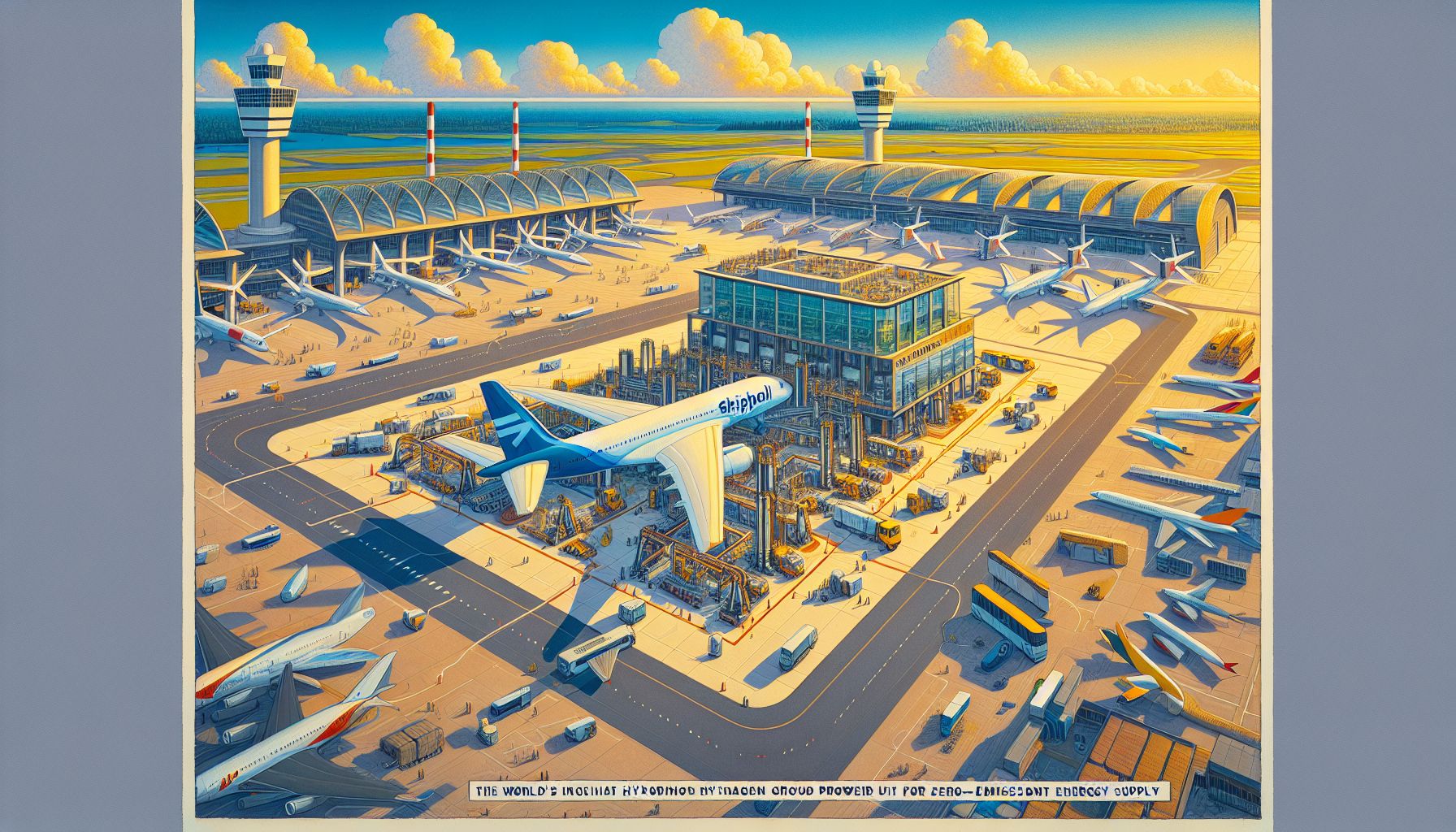Schiphol Airport Pioneers Hydrogen-Powered Ground Equipment

Schiphol, Friday, 23 August 2024.
Schiphol Airport has tested the world’s first hydrogen-powered Ground Power Unit for aircraft energy supply. This innovative step supports sustainable aviation goals and Schiphol’s aim for zero-emission ground operations by 2030, while improving local air quality.
Innovative Collaboration
Developed through a collaboration between Dutch scale-up Zepp.solutions and Austrian GPU manufacturer Dynell, the hydrogen-powered Ground Power Unit (H2-GPU) represents a significant advancement in sustainable aviation technology. The H2-GPU can be refueled on-site, eliminating the need for battery-powered GPU units to be moved to charging points, which saves both time and reduces vehicle movements at Schiphol Airport.
Operational Efficiency
Traditional electric GPUs often fall short in terms of capacity, necessitating the continued use of diesel-powered units. The introduction of the H2-GPU addresses this issue by offering a more robust and sustainable alternative, aligning with Schiphol’s ambitious goal to achieve emission-free ground operations by 2030. This new technology not only supports aircraft on the apron with essential power for cockpit lighting and other functions but also contributes to improved air quality in and around the airport.
KLM Cityhopper’s Role
KLM Cityhopper, a regional subsidiary of KLM Royal Dutch Airlines, is at the forefront of this initiative. Maarten Koopmans, Managing Director of KLM Cityhopper, emphasized the importance of developing hydrogen-powered equipment to achieve emission-free ground operations. He stated, ‘The battery solutions available today do not always meet our operational demands. At KLM Cityhopper, we are working diligently with our partners on technological solutions that we aim to standardize in our operations.’
Support from the European Union
The test of the H2-GPU is part of the TULIPS project, a collaborative effort among 33 European aviation stakeholders and research institutes, coordinated by Schiphol and funded by the European Commission. This project aims to accelerate the development and implementation of new technologies and procedures to make airport operations more sustainable. Additional focuses of the TULIPS project include large-scale Sustainable Aviation Fuel (SAF) supplies, sustainable energy storage, and circular material solutions, all contributing to the objectives of the EU Green Deal.
Future Implications
The successful testing of the H2-GPU at Schiphol Airport signifies a major leap towards greener airport operations. As airports worldwide grapple with the dual challenges of increasing air traffic and reducing carbon footprints, innovations like the hydrogen-powered GPU offer a promising pathway. Moving forward, the adoption of such technology could set a new standard in aviation, pushing the industry closer to achieving global sustainability targets.

